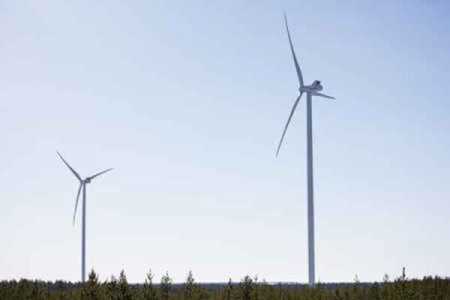|
Sun, 01 Jun, 2014 12:07:18 AM FTimes-Xinhua Report by Denise Wall, June 1
Finland is now trying to catch up to wind power pioneers such as Britain, Denmark, Spain and Germany, countries where wind power accounts for a growing proportion of energy output - in the case of Spain, wind power satisfies as much as 16 percent of total electricity demand. "We introduced the feed-in tariff in 2011 but we had trouble with radar issues. Since 2012 the capacity has been growing non-stop, and growth rates have been as high as 56 percent year-on-year," said Heidi Paalatie, Operational Manager of the Finnish Wind Power Association. According to Paalatie, the industry is now seeing a whirlwind of activity with some 250 projects ongoing, some of which are joint ventures involving international partners. "There is huge international interest in investing in this sector in Finland. Apart from the feed-in system, this is a low-corruption, stable and transparent country," she added. However she pointed out that not all of the projects listed on the books are active or even feasible. Greenpeace energy campaigner Jehki Harkonen said that although Finland is covering some ground after entering the wind power market ten years late, it will still take some time to smooth out the kinks in the system. "The current feed-in tariff will encourage investments," Harkonen said, referring to a long-term contract often used in the renewables sector that offers a degree of price certainty. "But there are problems with bureaucracy. It will take time before the system adapts to this new kind of energy because Finland is so highly regulated," he added. He noted that wind power leaders like Germany allow wind parks alongside highways and railroads, however such arrangements do not fly in Finland because of safety concerns. Like its European Union neighbors, Finland is tied to an ambitious undertaking by the European Commission to increase the use of renewable energy sources in the region. The European Commission Renewables Directive aims to ensure that by the year 2020, 20 percent of energy consumed in the EU will come from renewable sources, with member states each having their own individual targets. In the case of Finland the 2020 target is for renewables to contribute 38 percent of all energy production. "Wind power production is expected to rise to 6 Terawatt hours by 2020, or 6 percent of total electricity consumption," Paalatie said. That goal appears to be somewhat distant. According to the Technical Research Centre of Finland VTT, wind power capacity in Finland at the end of 2013 reached 447 Megawatts from 209 plants, and supplied only 0.9 percent of all electricity consumed in the country. Wind power as an alternative energy source hasn't won the hearts and minds of all members of the public either. Although EU surveys have consistently polled a high level of public support for wind power, small pockets of resistance to the technology have developed in Finland, with organizations such as the Wind Power Citizens Association (TVKY) expressing concerns about possible environmental damage and noise pollution. "The issue of noise pollution has been raised by people living close to wind power plants," noted Greenpeace's Harkonen. Paalatie pointed out that although sparsely-populated Finland would appear to be ideal for wind farms, the local summer cottage culture means that even wind installations in remote areas are likely to create some kind of disturbance. "Apart from that the levels of background noise in Finland are very low compared to many other countries. And the countryside is even quieter," she pointed out. General rules on noise levels introduced in 1991 have been put to the test since the acceleration of wind power activity, so new guidelines are to be announced in June by a multisectoral committee reporting to the Ministry of the Environment. More News
|
|
Finland Times
| Tuesday, 21 October, 2025 |


